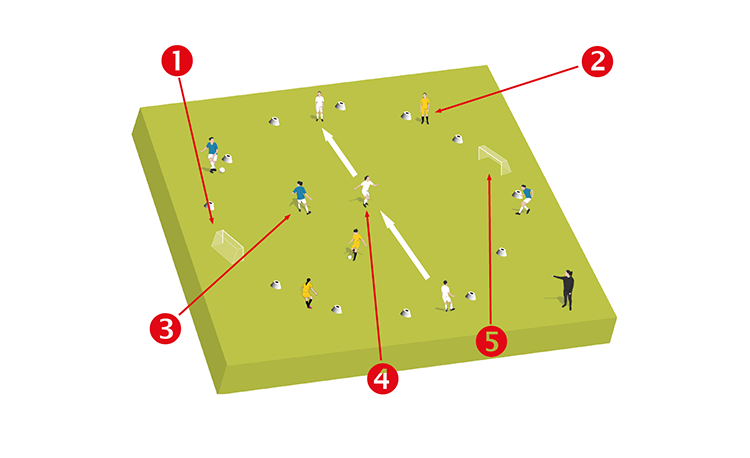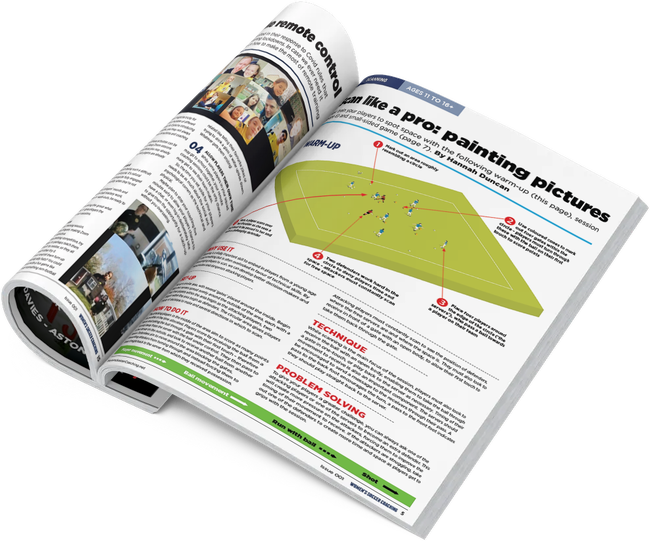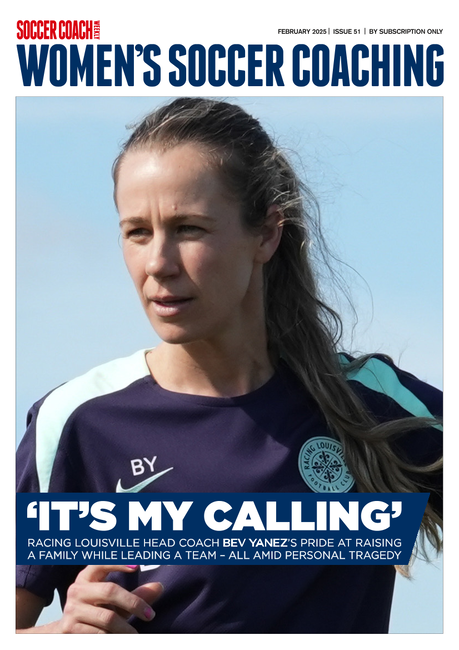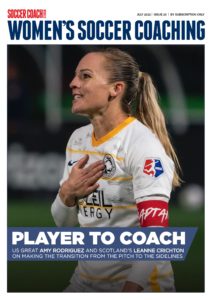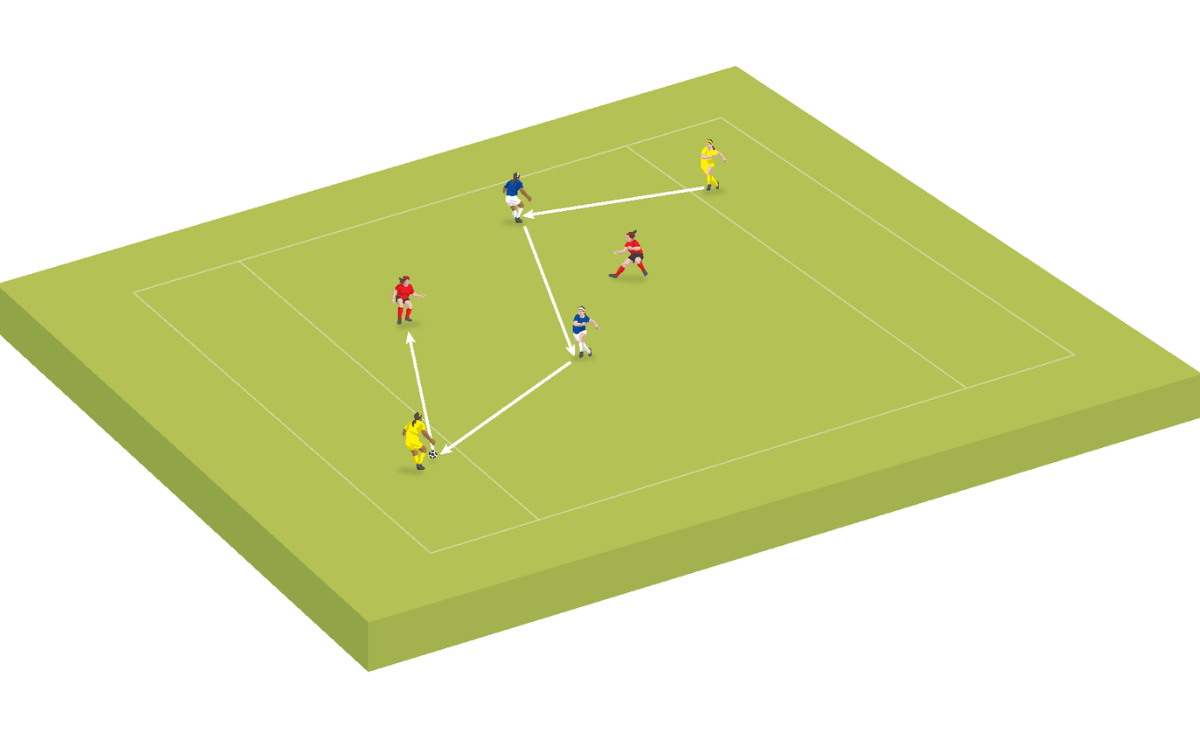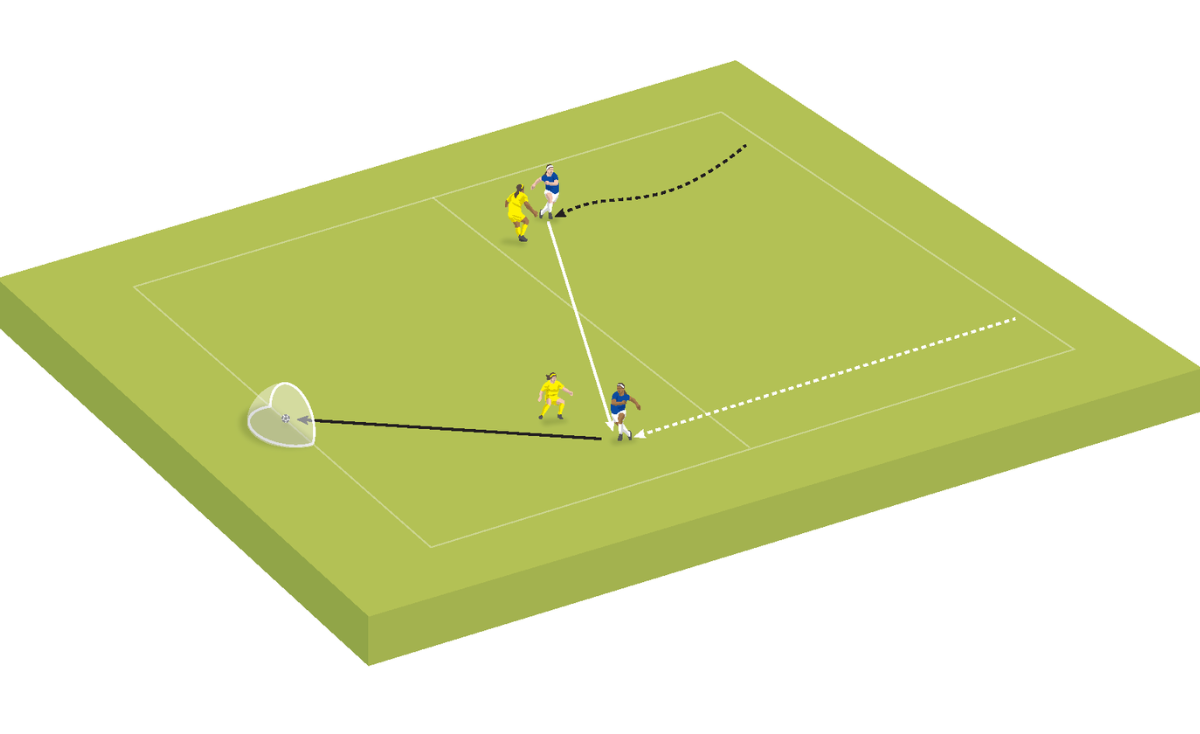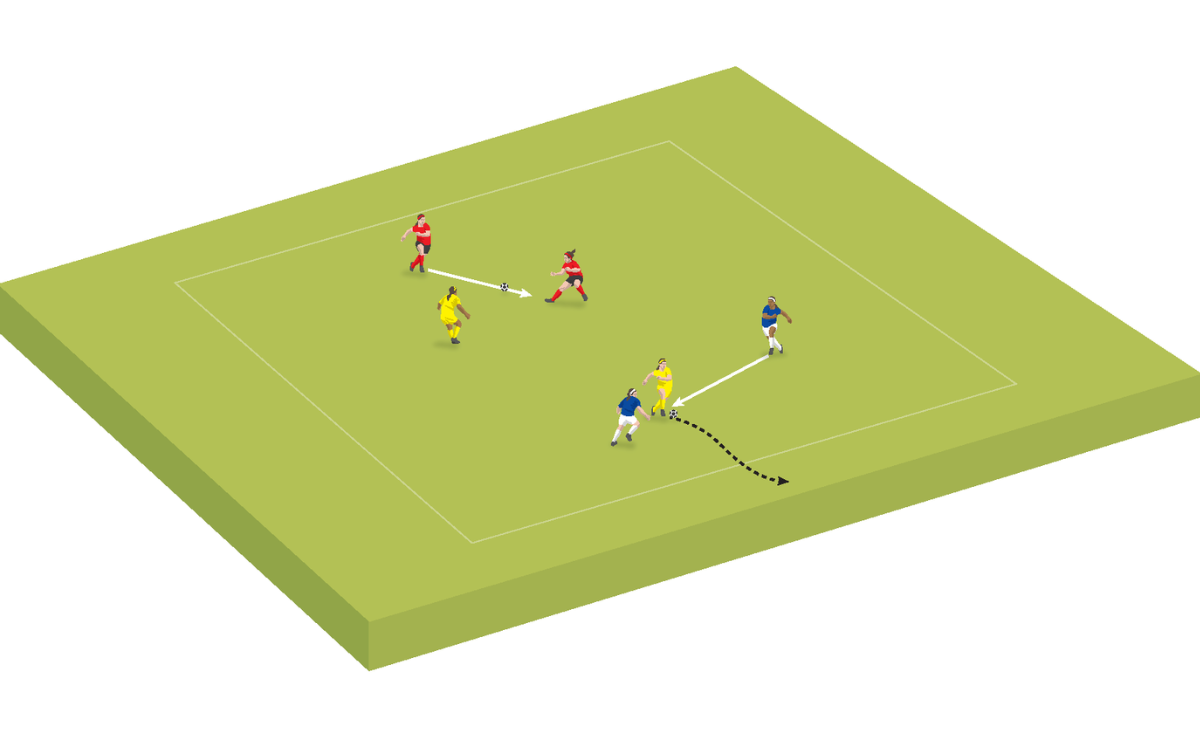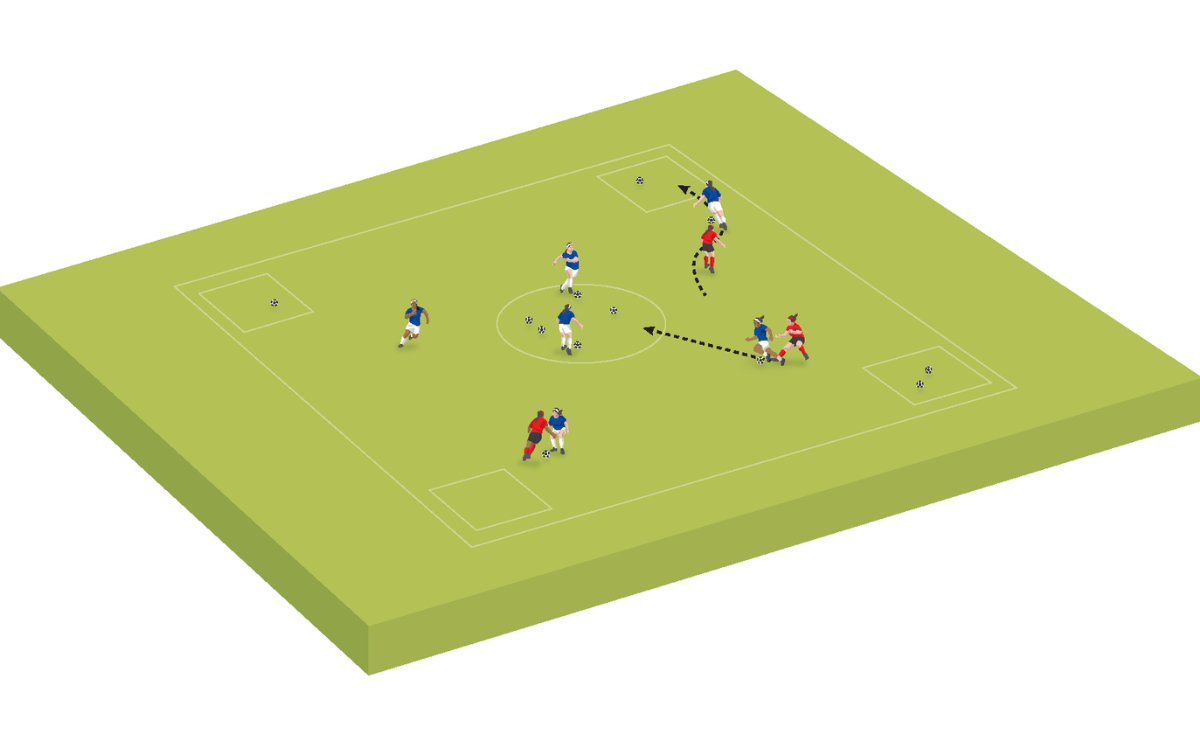You are viewing
1 of your 3 free articles
Receiving to play forwards - Warm-up
Soccer Drills & Gamesby Phoebe Webb
This technical practice is a great way to introduce players to a range of receiving skills, initially without too much interference or opposition. By Phoebe Webb
WHY USE IT
This session works on the receiving skills of your players, helping to develop key attributes like awareness, body shape, receiving on the back foot and first touch. Receiving is a vital skill for all players to develop, as it will dictate the speed at which they can play, the decisions they make and their ability to retain possession in tight areas and positively affect play.
SET-UP
Set up a circular or square playing area, with goals on opposite sides. Players begin by working in groups of three, with a ball per group. You can play with multiple groups in each area to increase the challenge.
HOW TO DO IT
Groups set up with two players on opposite outer sides and one player in the middle. The groups pass and receive among themselves, working the ball from one outside player to the other, via the central player. As players get used to the techniques, the outside players can move around, creating a greater challenge for their central player as well as interference for the other groups.
TECHNIQUE
This technical practice should focus on scanning before receiving to know where team-mates, space and other players are, as well as receiving the ball on an angle, with an open body position, which allows the receiver to see both team-mates.
Players on the outside should be encouraged to pass to the receiver’s back foot, enabling them to take a first touch towards the third player and play forwards quickly.
PROGRESSION
Players from one group can become defenders, who aim to win the ball and score in either of the small goals. This increases the challenge for the central players, helping them to sharpen up their movement and take more game-realistic touches away from defenders, as well as encouraging greater scanning.
1. Set up a circular or square playing area with a mini goal at opposite ends
2. Players work in groups of three, with two on the outside and one in the middle of the area. The central player works on receiving and passing out for a period of time before swapping
3. The central player should be encouraged to scan, receive with an open body and take a positive first touch in the direction they want to go
4. Here, the receiving player should be encouraged to change the angle of approach to receive at an angle to the passer, allowing them to see both teammates
5. The game can be progressed by one team becoming defenders. If they win possession, their aim is to score in either mini goal
Related Files
WSC-002-receiving-to-play-forwards-warm-up.pdfPDF, 213 KB
Newsletter Sign Up
Newsletter Sign Up
Discover the simple way to become a more effective, more successful soccer coach
In a recent survey 89% of subscribers said Women's Soccer Coaching makes them more confident, 91% said Women's Soccer Coaching makes them a more effective coach and 93% said Women's Soccer Coaching makes them more inspired.
*includes 3 coaching manuals
Get Inspired
All the latest techniques and approaches
Women's Soccer Coaching offers proven and easy to use soccer drills, coaching sessions, practice plans, small-sided games, warm-ups, training tips and advice.
We've been at the cutting edge of soccer coaching since we launched Soccer Coach Weekly in 2007, creating resources for the grassroots youth coach, following best practice from around the world and insights from the professional game.
